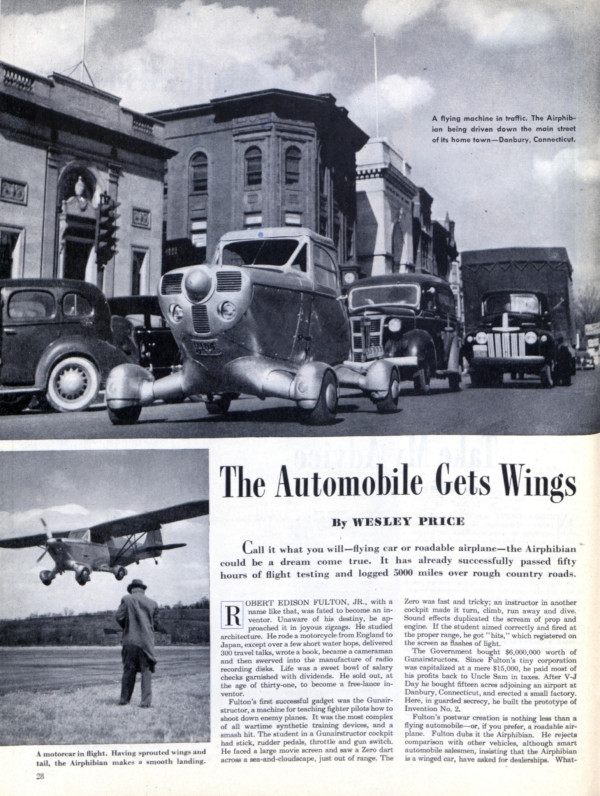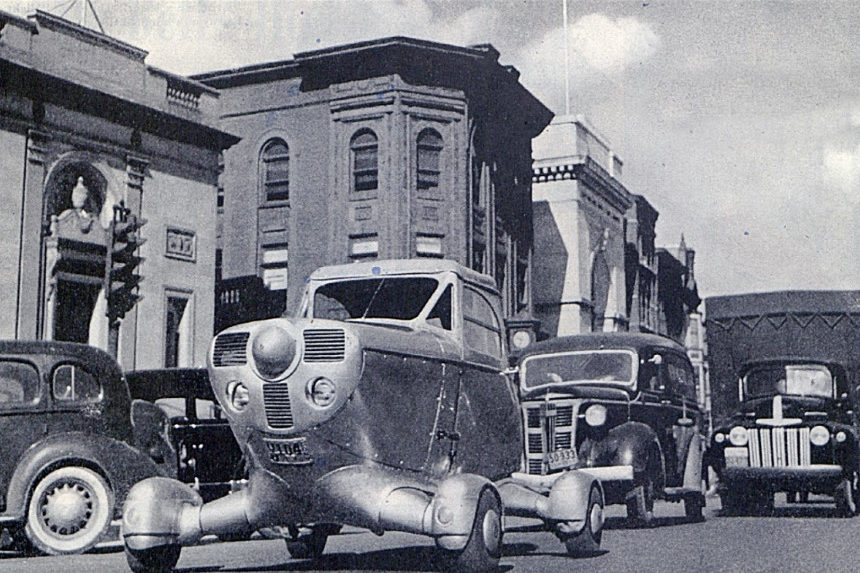The car designed by Robert Edison Fulton in 1947 had all the modern features of the day: a convertible top, safety glass, leather upholstery, windshield wipers, heat, and a dome light. But Fulton’s vehicle had one thing that made it unique.
It could fly.
Part plane, part car, the Airphibian was an aluminum automobile that, by adding a set of wings, could take off into the sky, Jetsons-style, and fly for several hours at 110 MPH.
Fulton was a Renaissance man who had also ridden motorcycles, given travel talks, worked behind the camera, and invented and then sold $6,000,000 worth of flight combat simulators to the U.S. government. He had plenty of funding to work on his next invention, the flying car.
Wesley Price, the writer of the May 17, 1947, article that appeared in the Post, pointed out the advantages of the land-air plane: “The Airphibian pilot won’t have to beg rides from the airport into town or wait for taxicabs to come out and get him. Wherever he goes, however long he stays, he will enjoy the use of a rugged little coupé.”
Unfortunately, few people were in the market for Fulton’s hybrid wonder. Only eight were built. The Airphibian failed as a commercial vehicle, according to the Smithsonian National Air and Space Museum, due to “the inherent compromises of air and car technologies and financial difficulties.” After all, one had to detach the propeller, fuselage, and wings and store them at the airport before driving away. It didn’t quite fit into a briefcase.
Today, the last surviving Airphibian is housed at the Steven F. Udvar-Hazy Center at Washington Dulles Airport. If you decide to go, make sure to call beforehand; the curators might have decided to take it for a spin.

Featured image: Photo by Gus Pasquarella for The Saturday Evening Post
Become a Saturday Evening Post member and enjoy unlimited access. Subscribe now



